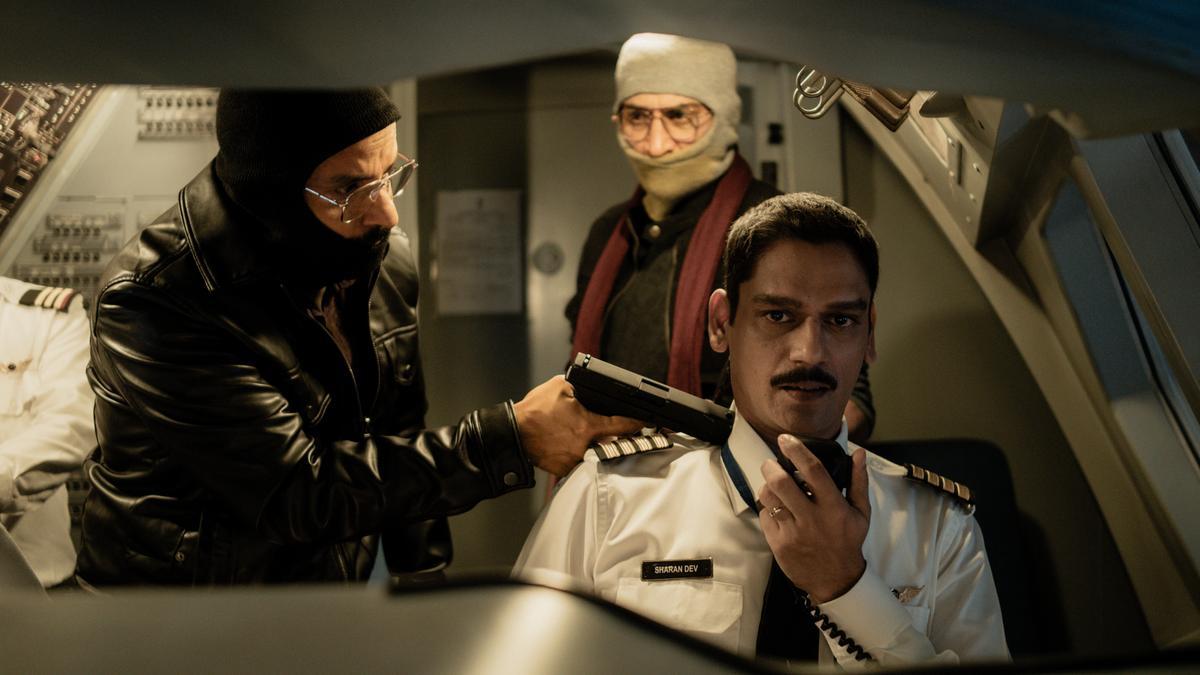
Netflix’s latest web series, “IC 814: The Kandahar Hijack,” encountered significant turbulence this week as social media users erupted in outrage over the names of the hijackers depicted in the critically acclaimed series. The row has snowballed, prompting action from the Information & Broadcasting Ministry, which has summoned the content chief of the OTT platform, Monika Shergill, to address the controversies. Additionally, a public interest litigation (PIL) has been filed before the Delhi High Court by the president of the organization ‘Hindu Sena’. The litigation claims that the series distorts the religious identities of the hijackers, specifically naming two of the five hijackers as “Bhola” and “Shankar,” and seeks to revoke the series’ certification.
Directed by Anubhav Sinha, the six-episode series dramatizes the harrowing hijacking of IC-814 on December 24, 1999, shortly after it departed from Kathmandu en route to Delhi. The Airbus 300 was forcibly diverted through multiple destinations—Amritsar, Lahore, Dubai, and finally, Kandahar in Afghanistan, which was then controlled by the Taliban. After six days of intense negotiations, this tense stand-off concluded with the Atal Bihari Vajpayee-led NDA government agreeing to release three infamous terrorists: Masood Azhar, Omar Saeed Sheikh, and Mushtaq Ahmad Zargar, securing the safety of the passengers and crew in return.
The series, which draws part of its narrative from “Flight to Fear,” a first-hand account by the plane’s pilot, Captain Devi Sharan, co-authored with journalist Srinjoy Chowdhury, has a disclaimer stating it to be a fictional work inspired by certain real-life events. Nevertheless, the creative liberties taken concerning the names of the hijackers have sparked considerable debate. Critics argue that the series fails to make it explicit that the hijackers operated under aliases, which some see as an essential piece of context.
Historical accounts and journalistic records from the period document that the hijackers indeed used code names. A notable reference is a press release from the Union Home Ministry dated January 6, 2000. This document revealed the hijackers’ actual names: Ibrahim Athar, Shahid Akhtar Sayeed, Sunny Ahmed Qazi, Mistri Zahoor Ibrahim, and Shakir. It also confirmed the aliases they used.
. The press release noted, “To the passengers of the hijacked plane, these hijackers came to be known respectively as (1) Chief, (2) Doctor, (3) Burger, (4) Bhola, and (5) Shankar, the names by which the hijackers invariably addressed one another.”
The distinction between aliases and real names, whilst clear to some, raises concerns for the future, as details from such significant events may fade from public memory. BJP leader Amit Malviya voiced his alarm on social media platform X, stating, “The hijackers of IC-814 were dreaded terrorists who acquired aliases to hide their Muslim identities. Filmmaker Anubhav Sinha legitimized their criminal intent by furthering their non-Muslim names. Result? Decades later, people will think Hindus hijacked IC-814.”
Although the series does not explicitly spell out that “Bhola” and “Shankar” were code names, it does reveal the identity of the character ‘Chief’ when negotiations hit a critical deadlock. Journalist Neelesh Misra, who authored a book on the hijacking, supported this with a post on X, pointing out that ‘Chief’ was revealed to be the brother of Masood Azhar. Within the narrative, ‘Bhola’ and ‘Shankar’ are minor characters, and their code names are mentioned only once throughout the entire six episodes.
This controversy has ignited significant conversation about the portrayal of historical events in contemporary media. While creative interpretations are an integral part of storytelling, the line between artistic license and historical accuracy can significantly impact public perception and memory, especially in a deeply polarized socio-political environment.
The outcome of the Information & Broadcasting Ministry’s summoning of Netflix’s content chief and the pending litigation might set a precedent for how sensitive historical events are treated in fictional adaptations in the future. As viewers, creators, and regulators navigate this delicate terrain, the incident underscores the power and responsibility that come with recounting historical narratives through the medium of television and film.
Navigating the fine line between creative interpretation and historical accuracy is no small feat. The ongoing fallout and public discourse highlight the complexity and potential implications of such storytelling choices in an age where digital content transcends geographical and cultural boundaries, thereby, influencing collective memory and identity.












